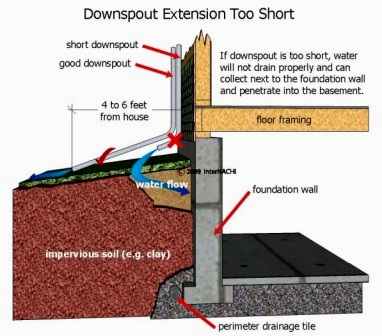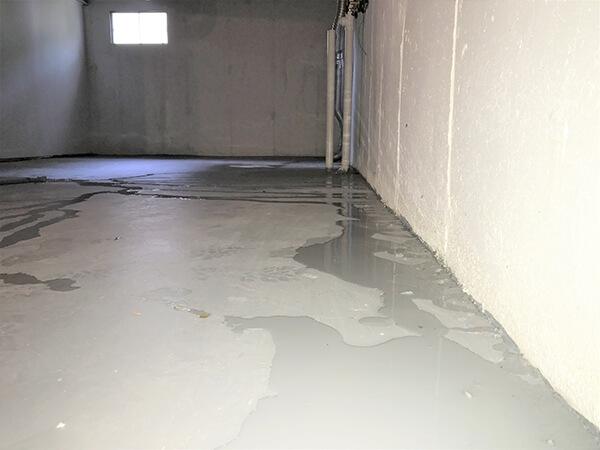Exactly How Cellar Waterproofing Functions: A Comprehensive Guide for Your Home
Basement waterproofing is essential for safeguarding homes from water damage. Numerous methods exist to attend to dampness issues, each customized to details reasons. Property owners need to understand these options to select the most effective option for their demands - Exterior Drainage Solutions. The efficiency of these approaches counts on the best materials and methods. What are the most typical methods, and just how can they be executed successfully? This guide will certainly check out these essential facets
Understanding the Reasons of Basement Moisture
Although cellars are often made to be useful and completely dry rooms, they can succumb to wetness because of different variables. One key reason is inadequate drain around the foundation, which can lead to water pooling and seepage. Furthermore, heavy rainfall or quick snowmelt can overwhelm drainage systems, aggravating moisture problems. An additional substantial element is the all-natural moisture present in the ground, which can permeate through wall surfaces and floorings, particularly in older homes with much less reliable obstacles. Fractures in the foundation might likewise enable water breach, specifically throughout periods of hefty precipitation. In addition, pipes leakages within the basement can add to moisture accumulation, producing an environment favorable to mold and mildew growth. Ultimately, inadequate ventilation can trap moisture, aggravating the overall wetness issue. Recognizing these causes is necessary for homeowners seeking efficient options to avoid basement wetness problems.
Types of Basement Waterproofing Approaches
Cellar waterproofing methods are important for safeguarding homes from dampness damage and maintaining a safe living environment. These methods can be generally classified right into external and indoor options. Inside waterproofing usually entails the installment of water drainage systems, sump pumps, and vapor obstacles. These systems work to draw away water far from the basement and avoid wetness from penetrating through the walls or floor.On the various other hand, outside waterproofing concentrates on preventing water from getting in the home in the top place. This can consist of excavation around the structure, applying waterproof finishings, and mounting drainage ceramic tiles to reroute water far from the framework. Furthermore, some property owners might select a mix of both external and interior methods to guarantee thorough defense. Ultimately, the option of waterproofing method relies on the certain problems of the home and the level of dampness present in the basement.
Products Used in Waterproofing Solutions

Numerous materials are employed in waterproofing remedies to boost the effectiveness of both outside and interior techniques. Frequently used products include fluid membranes, which create a smooth barrier versus wetness. These membranes are normally made from polyurethane or rubberized asphalt, providing flexibility and resilience. Additionally, cementitious waterproofing items are popular for their convenience of application and solid bond to surfaces.For outside applications, materials such as drainage boards and geotextiles work in redirecting water far from foundations. Squashed stone and crushed rock are additionally used in drainage systems, advertising correct water circulation and decreasing pressure accumulation. In many cases, specialized coverings and sealers, like silicone or epoxy, are applied to give added security versus water seepage. Together, these materials play a crucial function in making certain that a basement stays completely dry and safeguarded from water damages.
Actions to Waterproof Your Cellar
Waterproofing a basement includes a methodical strategy to efficiently prevent water breach and damages. The first action is to inspect the exterior of the home, looking for splits or gaps in the foundation. These need to be sealed with a proper water resistant sealer. Next off, validate that gutters and downspouts are functioning correctly and directing water away from the foundation.After resolving outside concerns, the interior ought to be evaluated. Setting up a water-proof membrane layer on basement walls can supply extra security. Water Solutions Omaha. It's additionally a good idea to apply a sump pump system to take care of any kind of water accumulation.Finally, grading the landscape around the home can assist route water far from the foundation, further decreasing the risk of water infiltration. By adhering to these actions faithfully, homeowners can develop a robust defense versus basement flooding and moisture troubles
Maintenance and Prevention Tips for a Dry Basement
Normal maintenance and proactive measures are vital to ensuring a completely dry basement long after first waterproofing efforts. Property owners should consistently evaluate downspouts and rain gutters, ensuring they direct water far from the foundation. It is crucial to keep these free from particles to avoid overflow. Additionally, keeping proper rating around the home assists network water away from the structure.Checking for YOURURL.com splits in wall surfaces or floorings is crucial, as these can permit wetness seepage. Any type of recognized cracks must be quickly secured with appropriate materials. Setting up a sump pump can provide added security versus flooding.Humidity levels in the cellar need to additionally be kept track of, as high moisture can lead to mold development. Making use of a dehumidifier can aid maintain a comfy atmosphere. Ultimately, guaranteeing correct ventilation in the basement aids in lowering wetness build-up, maintaining the stability of the waterproofing system with time.
Often Asked Concerns
The Length Of Time Does Basement Waterproofing Usually Last?
The durability of basement waterproofing frequently varies based on materials and installation quality. Normally, it can last from 5 to one decade, with some systems possibly withstanding longer if appropriately preserved and checked over time.
Can I Water-proof My Cellar Myself?
The private taken into consideration whether to water-proof their cellar independently. While do it yourself alternatives exist, they require knowledge of products and methods. Expert services guarantee reliable results, typically outweighing the possible threats and difficulties related to self-installation.

What Are the Signs of Inadequate Waterproofing?
Indicators of inadequate waterproofing consist of relentless wetness, mold development, musty smells, peeling off paint, and water spots on wall surfaces or floors. Home owners ought to deal with these concerns quickly to stop additional damages and keep a healthy living setting.

Does Basement Waterproofing Rise Home Value?
Cellar waterproofing can enhance a home's value by avoiding water damages and enhancing comfortable area. Prospective buyers usually prioritize completely dry basements, Clicking Here making waterproofing a beneficial investment that contributes to general building charm and marketability.
Just How Much Does Basement Waterproofing Price usually?
The ordinary price of basement waterproofing commonly ranges from $1,500 to $5,000, varying based upon factors such as project dimension, method utilized, and neighborhood market problems. Home owners should acquire numerous quotes for exact quotes. Basement waterproofing is essential for safeguarding homes from water damages. Cellar waterproofing methods are vital for shielding homes from moisture damage and maintaining a risk-free living setting. These systems function to draw away water away from the cellar and protect against wetness from permeating with the wall surfaces visit site or floor.On the various other hand, exterior waterproofing concentrates on preventing water from entering the home in the first place. The longevity of cellar waterproofing often varies based on materials and installation high quality. Cellar waterproofing can enhance a home's value by preventing water damage and enhancing comfortable room.